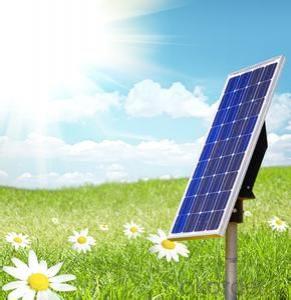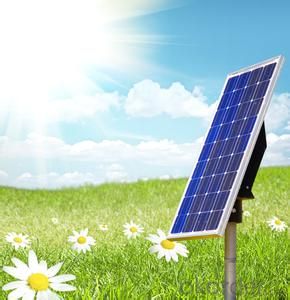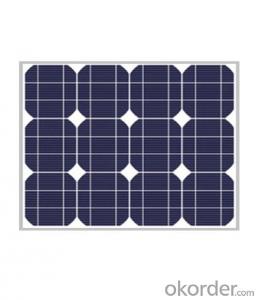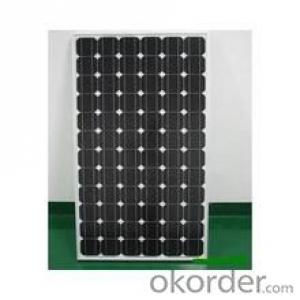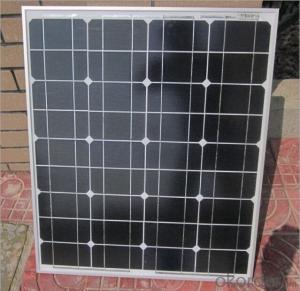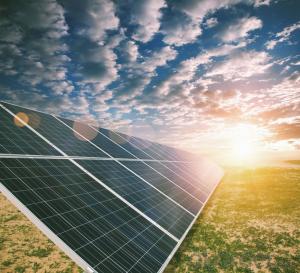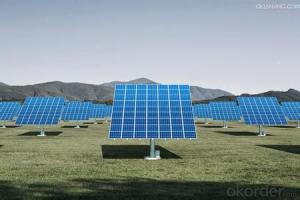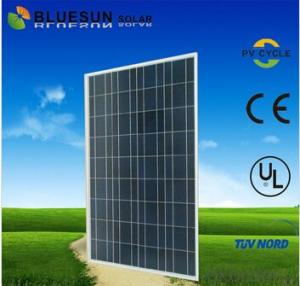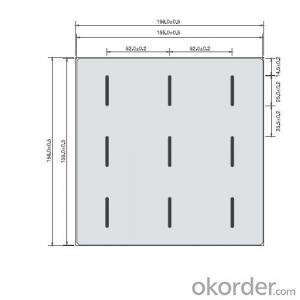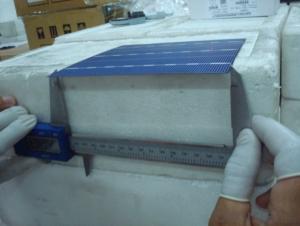Ruthenium Enhanced Monocrystalline Silicon Solar Cell 20w
- Loading Port:
- China Main Port
- Payment Terms:
- TT OR LC
- Min Order Qty:
- -
- Supply Capability:
- -
OKorder Service Pledge
OKorder Financial Service
You Might Also Like
Quick Details
| Place of Origin: | Brand Name: | Model Number: | |||
| Material: | Size: | Number of Cells: | |||
| Max. Power: |
Packaging & Delivery
| Packaging Detail: | general packing |
| Delivery Detail: | 20 days |
Specifications
solar cell
1. Different types:Mini, Round, Small, Big
2. Monocrystalline silicon
3. Polycrystalline silicon
4. High quilit
Mini monocrystalline silicon solar cell
PV cell
power: 20w
size:340*290*23mm
weight:1.5kg
FEATURES:
1,High module conversion efficiency, through superior manufacturing technology .
2,Guaranteed -1% to +3% power tolerance .
3,Entire module certificated to withstand high wind loads and snow loads .
4,Anodized alumimum is mainly for improving corrosion resistance .
5,Highly transparent , low-iron , tempered glass and antireflective coating
6,Excellent performance under low light environments .
Benefits:
1,5 years warranty on materials and workmanship and 10 years warranty on power output .
2,Product liability insurance .
3,Enhanced design for easy installation and long tern reliaili
- Q: Does the solar cell generate electricity in the absence of the sun, only in the case of strong lights or lasers? If you can achieve how much, and the same day?
- Strong light or laser light containing more than the threshold of solar cells can stimulate the solar cell power generation, if it does not contain, can not make too much battery power generation.
- Q: How do solar cells perform in areas with high levels of dust?
- Solar cells tend to perform less efficiently in areas with high levels of dust. The dust particles can accumulate on the surface of the solar panels, reducing their ability to absorb sunlight and convert it into electricity. This buildup can lead to a decrease in energy production and overall performance of the solar cells. Regular cleaning and maintenance of the panels are necessary to mitigate the impact of dust and ensure optimal efficiency.
- Q: What is the role of solar cells in powering outdoor lighting?
- Solar cells play a crucial role in powering outdoor lighting as they convert sunlight into electricity. This renewable energy source is harnessed by solar cells installed on outdoor lighting fixtures, allowing them to operate without the need for grid electricity. Solar cells capture sunlight during the day and store the energy in batteries, which is then used to power the outdoor lights during nighttime. This sustainable solution helps reduce carbon emissions, lowers energy costs, and provides reliable lighting in outdoor spaces, even in remote areas where electrical infrastructure may be limited.
- Q: Can solar cells be used for refrigeration?
- Yes, solar cells can be used for refrigeration. By converting sunlight into electricity, solar cells can power refrigeration systems that use the electricity to cool and maintain a low temperature. This is particularly useful in areas with limited access to electricity grids or during power outages, where solar-powered refrigeration can provide a sustainable and reliable cooling solution.
- Q: Can solar cells be used in clothing?
- Yes, solar cells can be used in clothing.
- Q: Can solar cells be used in areas with high humidity?
- Yes, solar cells can be used in areas with high humidity. While high humidity can affect the performance of solar cells to some extent, modern solar cell technology is designed to withstand varying environmental conditions, including high humidity. Additionally, regular maintenance and protective coatings can help mitigate any potential humidity-related issues, allowing solar cells to efficiently generate electricity in humid areas.
- Q: What happens to excess electricity generated by solar cells?
- Excess electricity generated by solar cells can be stored in batteries for later use, fed into the power grid to offset energy consumption, or utilized to power other devices or systems within the property.
- Q: Can solar cells be used in space stations?
- Yes, solar cells can be used in space stations. In fact, they are extensively used to generate electricity in space stations such as the International Space Station (ISS). Solar cells capture sunlight and convert it into electricity, providing a reliable and sustainable source of power for various systems and experiments onboard the space station.
- Q: Can solar cells be used in drones?
- Yes, solar cells can be used in drones. Solar-powered drones utilize photovoltaic cells to convert sunlight into electricity, which is then used to power the drone's propulsion system and other onboard equipment. This allows drones to have extended flight times and reduces reliance on traditional battery power.
- Q: Can solar cells be used in electric vehicle charging stations?
- Yes, solar cells can be used in electric vehicle charging stations. Solar panels can capture sunlight and convert it into electricity, which can then be used to charge electric vehicles. This approach is known as solar-powered charging stations and is an environmentally friendly alternative to traditional grid-powered stations.
Send your message to us
Ruthenium Enhanced Monocrystalline Silicon Solar Cell 20w
- Loading Port:
- China Main Port
- Payment Terms:
- TT OR LC
- Min Order Qty:
- -
- Supply Capability:
- -
OKorder Service Pledge
OKorder Financial Service
Similar products
Hot products
Hot Searches
Related keywords
